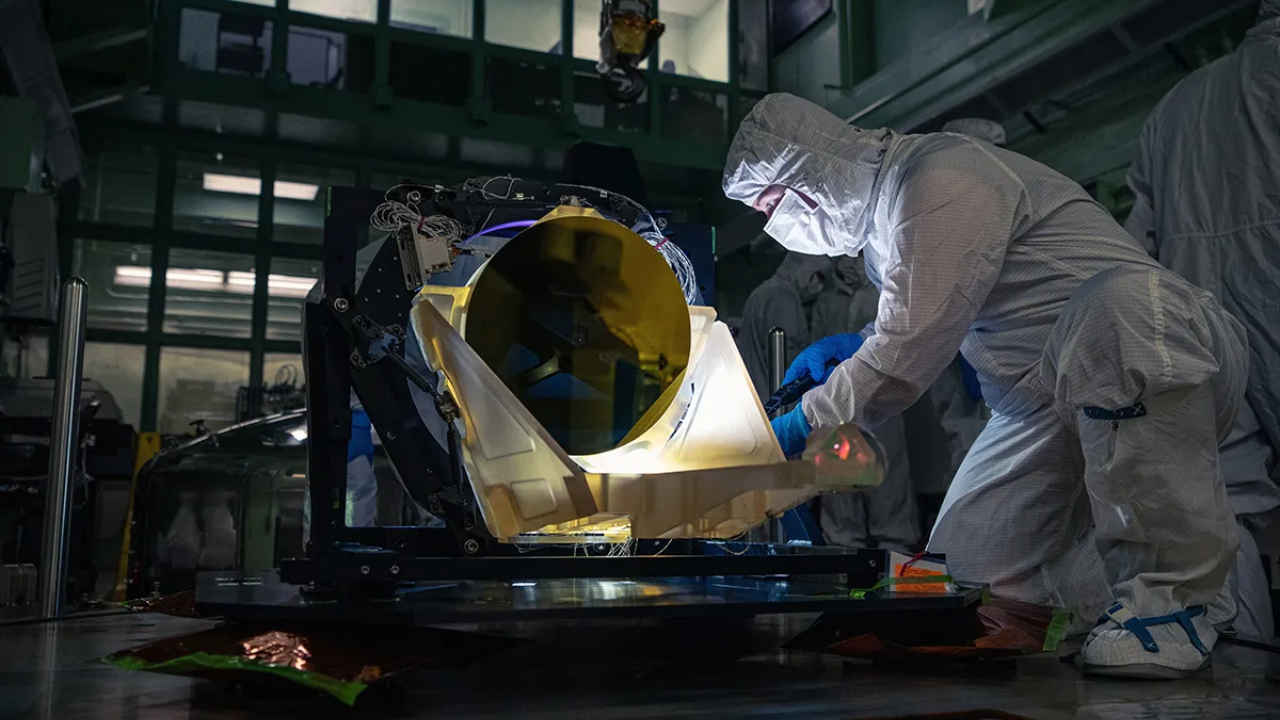NASA unveils full-scale prototype telescope that aims to detect gravitational waves
NASA has given a first look at a full-scale prototype of the telescopes that will help detect gravitational waveS.
The telescopes are part of the LISA (Laser Interferometer Space Antenna) mission.
LISA project is led by the European Space Agency (ESA) in partnership with NASA.

NASA has given a first look at a full-scale prototype of the telescopes that will help detect gravitational waves. Gravitational waves are ripples in space-time produced by the merging of black holes and other cosmic events. These telescopes are part of the LISA (Laser Interferometer Space Antenna) mission, a project led by the European Space Agency (ESA) in partnership with NASA.
 Survey
SurveyThe LISA mission aims to detect gravitational waves using lasers to measure precise distances — down to trillionths of a meter, or picometers — between a trio of spacecraft. These spacecraft will be positioned in a triangular formation, with each side of the triangle array measuring nearly 1.6 million miles (about 2.5 million kilometres).
Also read: NASA reveals strategy against ‘planet killer’ asteroids: All you need to know
“Twin telescopes aboard each spacecraft will both transmit and receive infrared laser beams to track their companions, and NASA is supplying all six of them to the LISA mission,” said Ryan DeRosa, a researcher at NASA’s Goddard Space Flight Center in Greenbelt, Maryland. “The prototype, called the Engineering Development Unit Telescope, will guide us as we work toward building the flight hardware,” DeRosa added.
The Engineering Development Unit Telescope was manufactured and assembled by L3Harris Technologies in Rochester, New York, and arrived at Goddard in May. The prototype’s primary mirror is coated in gold to improve its ability to reflect infrared lasers and minimise heat loss.
Also read: Did Earth ever have rings like Saturn? Study links asteroid breakup to climate change
The telescope is made from a glass-ceramic material called Zerodur, which is amber-coloured and manufactured by Schott in Mainz, Germany. This material is widely used for telescope mirrors because it maintains its shape across a wide range of temperatures, ensuring high precision.
It’s important to note that the LISA mission is scheduled to launch in the mid-2030s, as per NASA.
Ayushi Jain
Ayushi works as Chief Copy Editor at Digit, covering everything from breaking tech news to in-depth smartphone reviews. Prior to Digit, she was part of the editorial team at IANS. View Full Profile